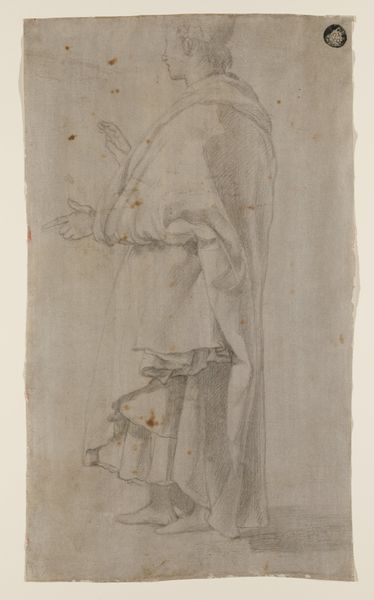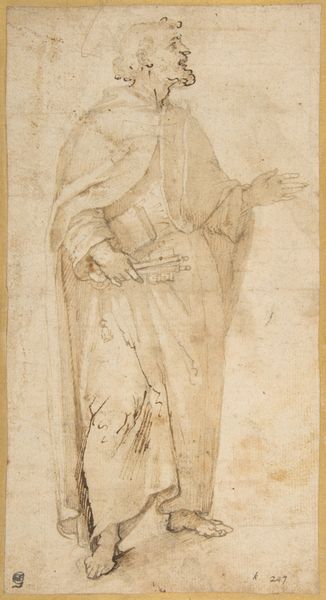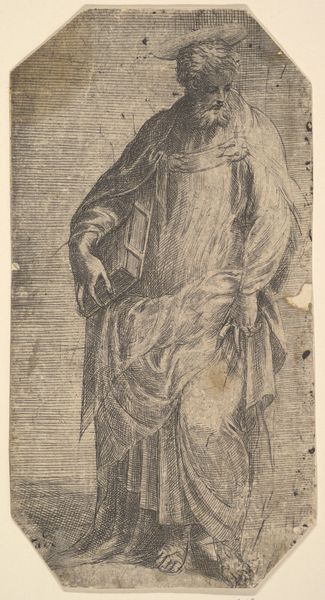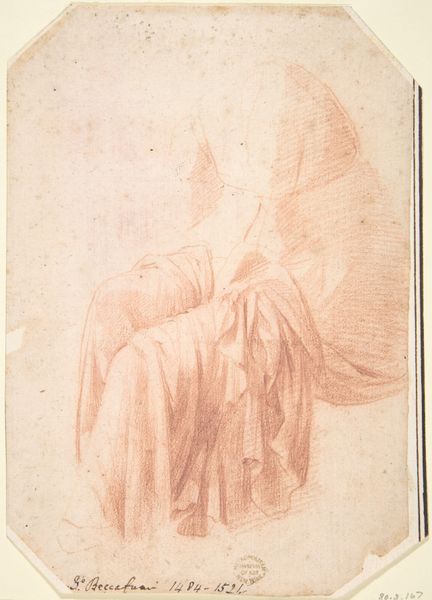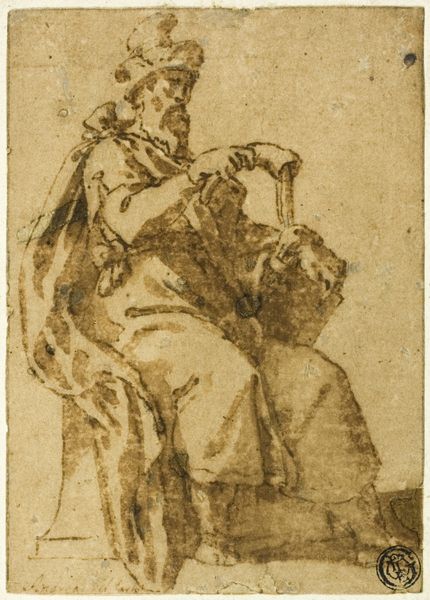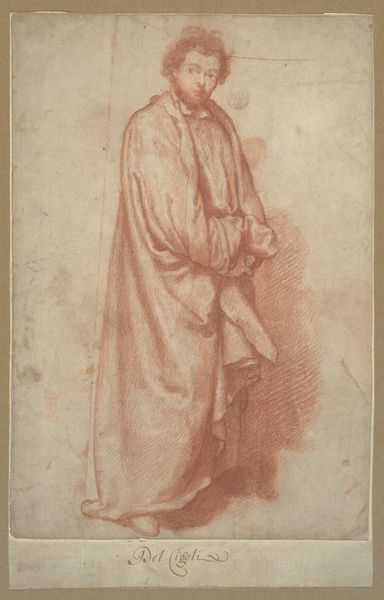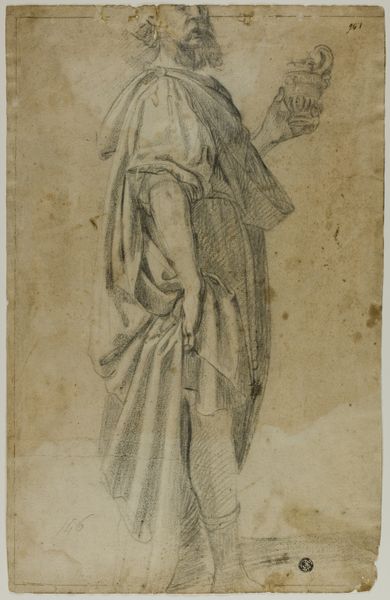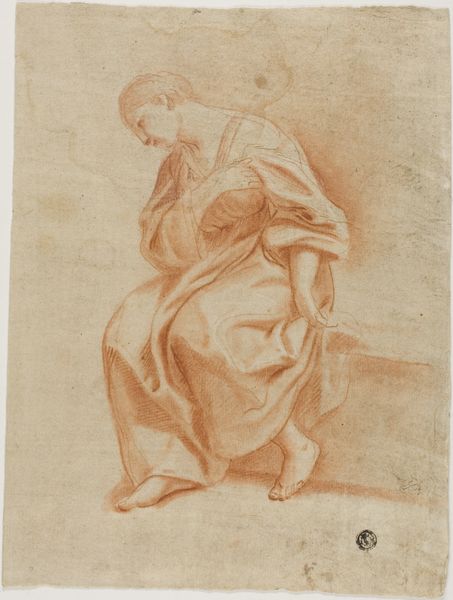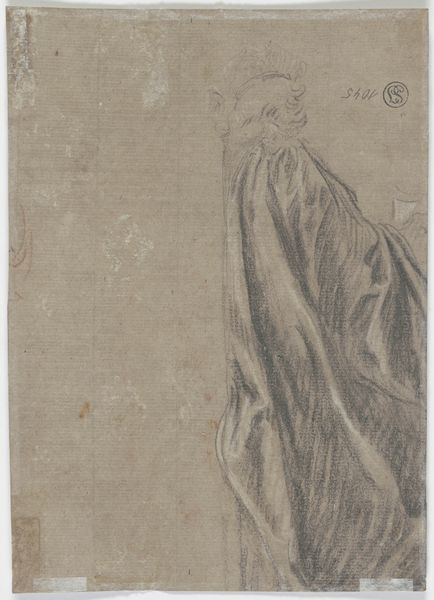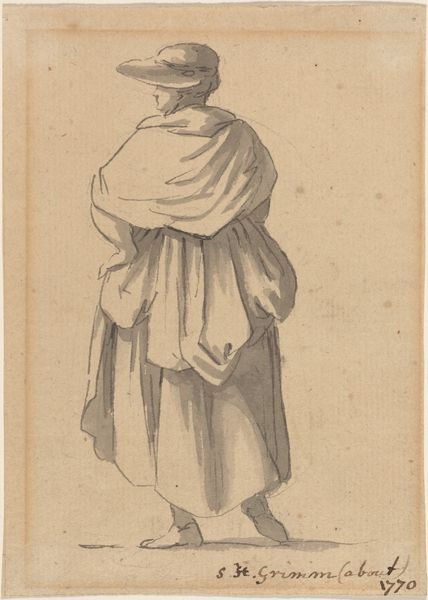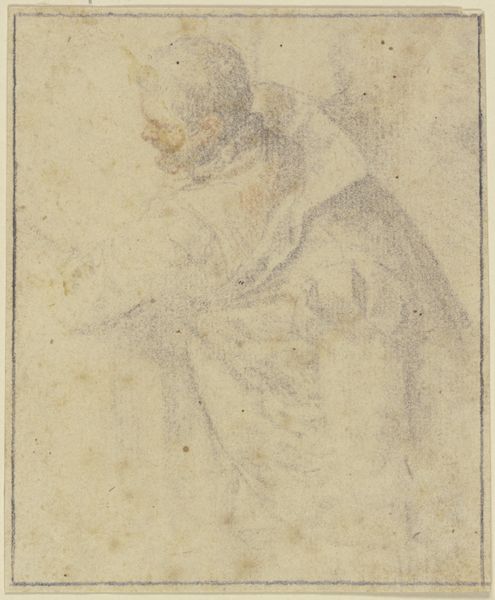
drawing, paper, charcoal, black-chalk
#
portrait
#
drawing
#
charcoal drawing
#
figuration
#
paper
#
charcoal
#
history-painting
#
academic-art
#
italian-renaissance
#
early-renaissance
#
black-chalk
Dimensions: 14 5/16 x 7 in. (36.35 x 17.78 cm) (sheet)17 3/8 x 10 in. (44.13 x 25.4 cm) (mount)
Copyright: Public Domain
Curator: Looking at this drawing attributed to Fra Paolino, "Standing Male Saint," created between 1517 and 1525, I’m struck by the artist’s adept use of charcoal and black chalk on paper to render the figure. Editor: My first impression is one of solemn authority, almost austere. The upward angle and pointing hand, paired with the shading and relatively muted tones, evoke a certain gravitas and direct purpose. Curator: Yes, I'm intrigued by the saint's garb, seemingly draped over his shoulder; note the textural contrast achieved through layering and blending of charcoal—this suggests a high-quality textile and simultaneously displays Paolino's technical skills and access to fine materials. Who was commissioning this, and for what purpose? What specific types of charcoal and chalk allowed for such shading effects, and how were these pigments manufactured and traded during the Renaissance? Editor: It prompts questions about the artistic milieu in Florence at the time, and Paolino’s role within it. Given his proximity to Fra Bartolomeo, how did workshop practices influence the proliferation and iconography of similar depictions of saints? Did these drawings function as independent works, preparatory sketches, or devotional images circulated amongst the monastic orders? Curator: Exactly. Considering its potential function, we also need to examine the economics surrounding paper production. Was the type of paper utilized a costly choice indicating a wealthier patron, or a more readily available product? The means of artistic production themselves hold a wealth of social data. Editor: Agreed. Beyond just materials and economic forces, I am also struck by the act of pointing, it demands consideration, especially with the figure rendered on paper. What specific doctrines, political messages, or forms of instruction were being visually amplified and promoted to viewers during the Early Renaissance via sketches and similar works, considering they were at that time viewed by an elite? Curator: Well, considering the available resources, it does point to a desire for broader accessibility, even if ultimately confined. Thanks, these factors are useful for rethinking how to frame Paolino's intentions. Editor: And for reconsidering the public's engagement. Food for thought, indeed!
Comments
No comments
Be the first to comment and join the conversation on the ultimate creative platform.
